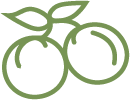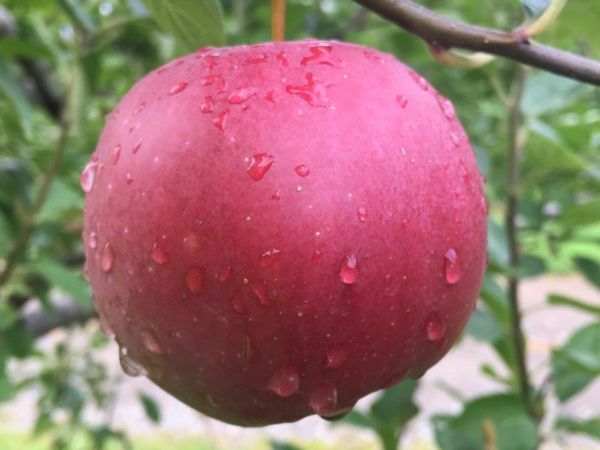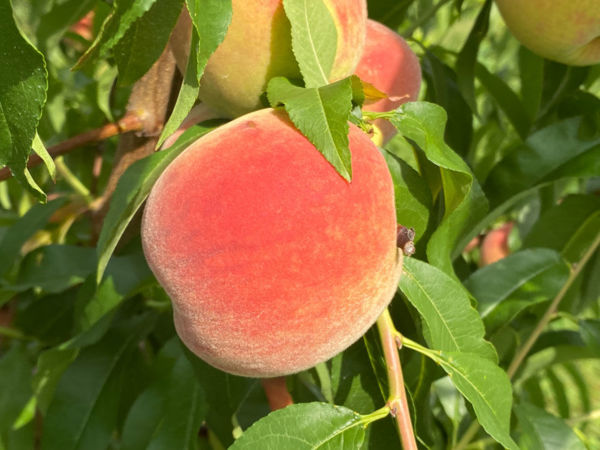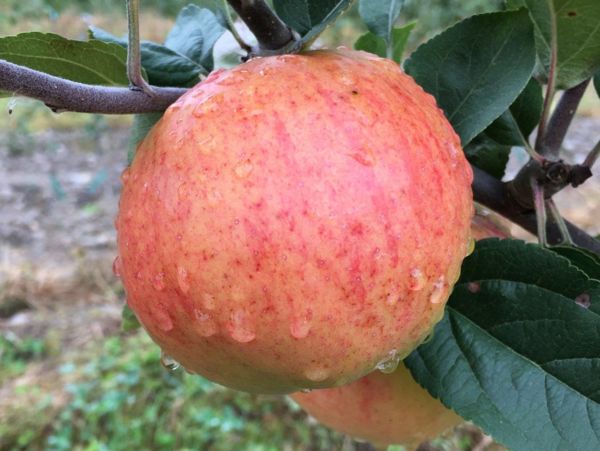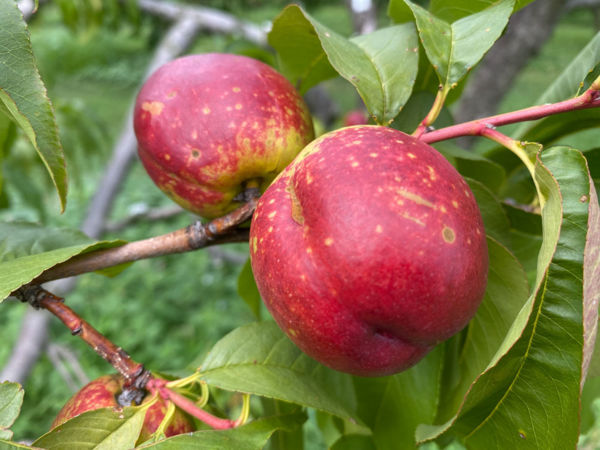An attractive, highly disease-resistant apple, ideal for organic growers.
Quince Rust
Fruits Affected
Also See
Fruit Tree Diseases and Pests: An IntroductionList of Common Fruit Tree Diseases and Pests
Caused by the fungus Gymnosporangium clavipes, quince rust affects apples and, to a lesser degree, pears. Like cedar-apple rust it requires two hosts to complete its life-cycle, a pome fruit and a juniper or cedar tree.
Symptoms
Deformed fruit and purple lesions on fruit; visible spore sacs on fruit.
Organic Treatments
The strategies for managing quince rust are similar to those for cedar-apple rust. You should remove infected evergreens from your own property if possible, but obviously it's not the best idea to chop down your neighbor's juniper trees. Infected material can be removed from both pome trees and evergreens, and the growing area should be kept clear of debris. Fortunately, this disease is relatively rare compared to cedar-apple rust as the conditions for infection are quite specific, but in some cases fungicide treatment may be necessary.
Conventional Treatments
Mankozeb (Penkozeb) is the most effective chemical for controlling quince rust.
Disease Cycle
Caused by the fungus Gymnosporangium clavipes, quince rust affects apples and, to a lesser degree, pears. Like cedar-apple rust it requires two hosts to complete its life-cycle, a pome fruit and a juniper or cedar tree. The spores released from infected fruit trees will travel to a nearby evergreen host. The next growing season, the host produces orange, gelatinous galls or an orange ooze that will release spores to reinfect nearby fruit trees, specifically when rainfall occurs during bloom. The spores can travel over a mile, and quince rust galls on evergreens can remain infectious for many years (unlike those of cedar-apple rust).
The symptoms of quince rust first appear on fruit as a purple lesion, usually encircling the entire calyx end. As the fungus develops, the fruit becomes deformed and eventually produces visible, tube-like spore sacs. Fully developed quince rust is either disgusting or fascinating, depending on your tolerance for bizarre-looking fungi. Either way, the fruit is inedible.
For more information, see Cornell's IPM Factsheet on Apple Rust Diseases and A Grower's Guide to Organic Apples by Cornell cooperative Extension.
Photo courtesy of Dr. David Rosenberger, Cornell University.
Featured Products
A few things we're loving right now...
A full-flavored, freestone white peach.
A traditional semisharp cider apple from Spain.
A widely-grown, large, yellow-fleshed nectarine.





